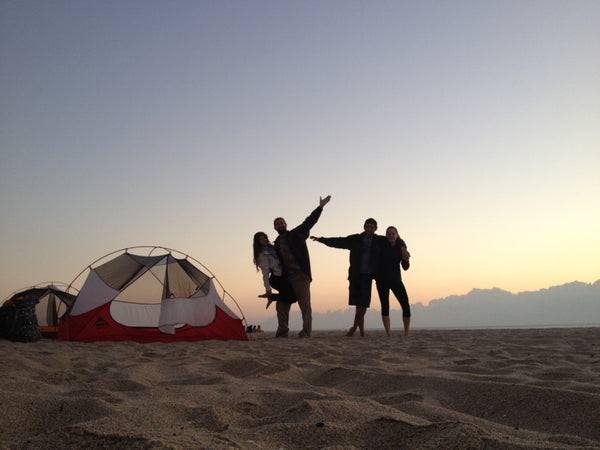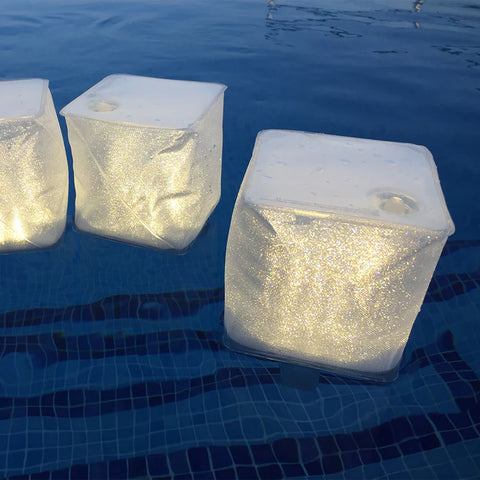Eco Camping: A Guide to Sustainable Camping
Ah camping...
Getting outdoors, reconnecting with nature and completely unplugging from real life, what’s not to love? In a world where we’re all constantly bombarded with notifications, noise pollution and brands trying to get our attention. It’s really rare when we can do a digital detox and practice fully living in the moment.

Being able to tune in with the great outdoors allows our overstimulated minds to take a much needed break. We can breathe a little deeper, calm our nervous systems and put all of life’s anxieties into perspective. Being in nature reminds us how much beauty is in the world and how tiny we are in the grand scheme of the universe. Okay, we may be getting a little philosophical now…
So if nature can do allllll of that, the least we can do is give back to Mama N. in some way! And while camping is the least carbon intensive type of travel we can do, there is still an environmental impact everytime we pack up our tents and hit the road. Luckily there are plenty of ways we can reduce our carbon footprint while we camp. Use this guide to make your eco camping trip as sustainable as possible.
- PIRANI LIFE TUMBLERS - You can’t leave home without your favorite eco-friendly stackable drinkware! Pirani tumblers are a godsend while camping. They keep your drinks cold for 12+ hours and hot for 6 hours. Perfect for when you’re out on a grueling hike or sitting around the campfire with a cup of hot chocolate. Or if you just want to kick back in a camping chair under the sun with a cold beer!
Each tumbler comes in two sizes (16oz and 26oz) and includes an interchangeable lid to keep any stray ash or dust out of your drink. Plus they are stackable which makes it super easy to load up in the car without taking up too much space. We all know car space is at a premium when camping.
- BIODEGRADEABLE DISH SOAP - A dish soap bar is a perfect zero waste camping accessory! Find one that is made from natural biodegradable ingredients and wrapped in a recyclable or compostable wrapping.

- RECHARGABLE LIGHTER - A rechargeable USB lighter is a great alternative to traditional lighters. These lighters are meant to last a lifetime so you eliminate the need for butane refills or replacements, reducing landfill waste and saving money in the long run. The flameless design means it’s safer to use while camping and that it will work flawlessly even in windy conditions. This portable gadget is a reliable companion for starting campfires, or lighting camping stoves.

- SOLAR LANTERN - Solar-powered lanterns are the ultimate camping companion, providing eco-friendly illumination wherever you go. Harnessing the power of the sun, these portable lanterns offer convenient recharging, long-lasting battery life, and a sustainable alternative to traditional lighting solutions for your outdoor adventures.

Sustainable Camping Tips
Stick to designated areas - One of the most basic (and easy to follow!) rules for eco camping is stick to designated areas. If you’re wilderness camping and there aren’t any cleared areas, then keep an eye out for places others have camped before you. The idea is to disturb as little plant and wildlife as possible. It may not seem like a big deal to tiptoe off the trail. But if every single person did the same, the footprint (pun intended) would be overwhelming.

Be respectful of wildlife - When you’re camping it’s exciting to spot new animals out in the wild. But feeding or approaching wildlife can have devastating consequences. Even if you’re not as audacious as to taunt a bison in Yellowstone National Park, interacting with animals can be dangerous for yourself and the wildlife. The Forest Service suggests staying 100 yards from bears and 25 yards from other large animals.
Leave no trace - We’ve all heard the phrase, but what does that really mean? Always do a sweep of your campsite before leaving to make sure you didn’t leave any litter or gear behind. There may or may not be trash disposal at your campsite. If not, plan to pack out all of your garbage.
Be aware of fire permits and bans - Is there anything better than sitting around a campfire, roasting marshmallows and watching the embers burn? It’s summer epitomized. But unfortunately the outdoors and fire don’t always mix. The last thing you want is to be the cause of a devastating forest fire. Do your homework and find out if fires are allowed at your site. If so, you may need a fire permit, which often requires you to complete a simple online course or test. If you do choose to have a fire, make sure you can put it out properly.
Use environmentally-friendly products outdoors - Pollution is much more than just littering. Sunscreens, bug sprays and other products often have toxic chemicals that pollute the air. Use all natural, non toxic products to avoid contaminating the air, water or ground.
Eco Friendly Camping Destinations
So now that you’ve got the gear and you know all the best tips, where should you go?! Of course the closer the destination, the more eco-friendly it will be because you’ve reduced your transportation footprint. As long as you're driving to your campsite, rather than flying, you’re already being a sustainable traveler!
Acadia National Park, Maine: Acadia National Park, located along the rugged coast of Maine, offers beautiful landscapes, granite peaks, and stunning ocean views. The park provides eco-friendly camping options where visitors can enjoy hiking trails, kayaking, and wildlife spotting while minimizing their environmental impact.
Redwood National and State Parks, California: Known for its towering ancient redwoods, this park is a haven for nature enthusiasts. Eco-friendly camping options are available, allowing visitors to immerse themselves in the awe-inspiring beauty of the redwood forests while supporting sustainable practices.
Sian Ka'an Biosphere Reserve, Mexico: Camp in this UNESCO World Heritage Site and biosphere reserve, which is home to diverse ecosystems including mangroves, coral reefs, and tropical forests.
Tofino, Canada: Located on Vancouver Island, Tofino offers eco-friendly camping options along with beautiful beaches, ancient rainforests, and opportunities for whale watching.
Torres del Paine National Park, Chile: This stunning national park offers various eco-friendly camping options amidst glaciers, mountains, and lakes.
Abel Tasman National Park, New Zealand: Known for its golden beaches and crystal-clear waters, Abel Tasman National Park provides eco-friendly campsites and hiking trails. Danielle and Brandegee did a 4 day thru hike here in 2014 during their working holiday visa in Australia!
Great Barrier Reef, Australia: Camp on the islands of the Great Barrier Reef and experience the world's largest coral reef system while supporting eco-conscious practices.
Olympic National Park, United States: Located in Washington state, this park has eco-friendly camping opportunities in incredibly diverse ecosystems, including lush rainforests and rugged coastlines.
Lake District National Park, United Kingdom: Experience the picturesque landscapes of England's Lake District while camping at eco-friendly sites that emphasize sustainability.
All these destinations offer opportunities for outdoor adventure and give you a chance to connect with nature while being an ally to the environment. Remember to familiarize yourself with the rules and regulations specific to each park to make sure you are camping in an eco-friendly manner.











Leave a comment